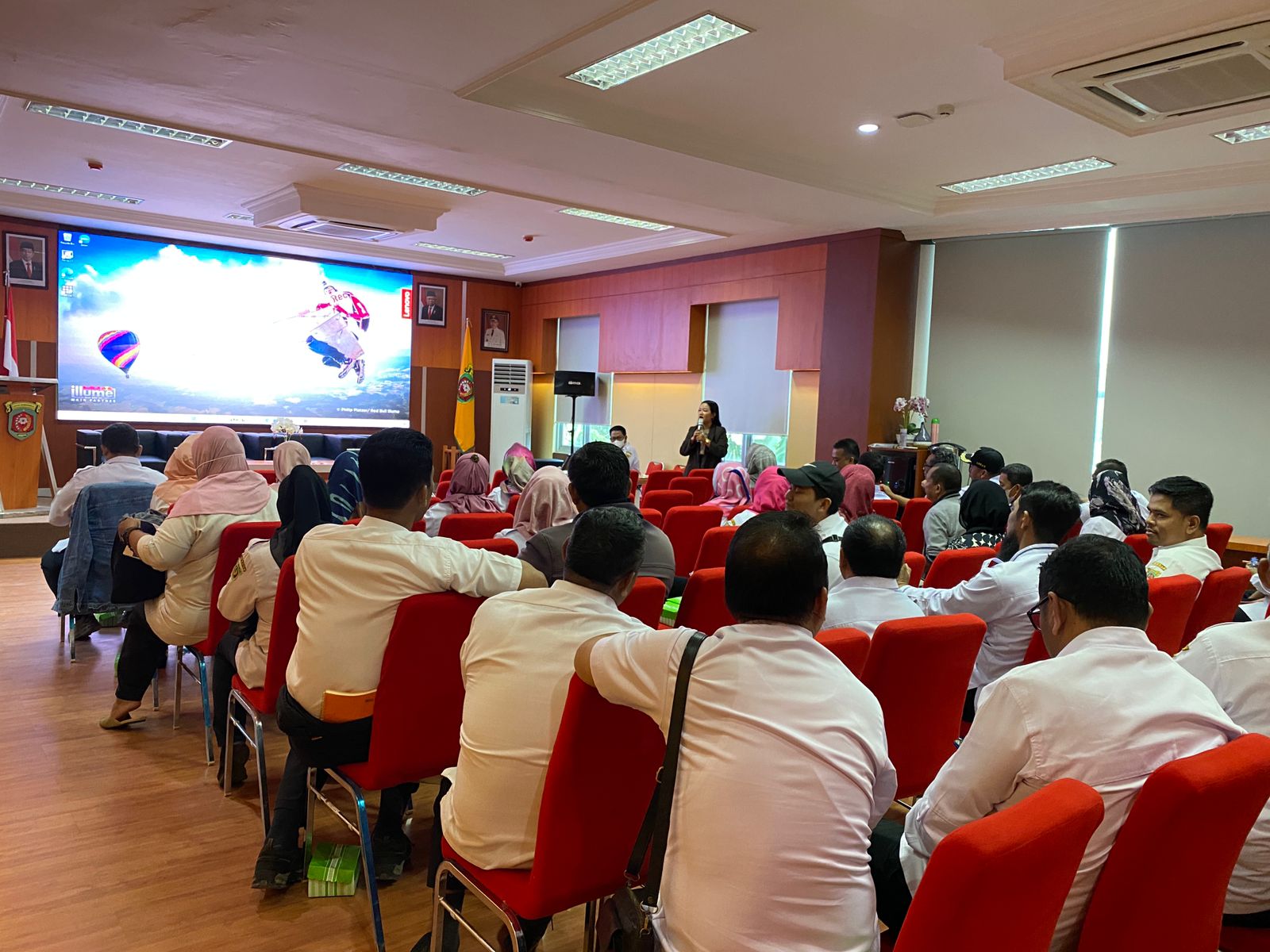Following the completion of the Climate Action Plan (CAP) mitigation and adaptation trainings in November, Samarinda city’s Climate Working Group or Pokja held discussions on advancing the city’s CAP.
Building on this momentum, a follow-up discussion sessions to confirm the document’s progress on 6th and 7th December 2023 involving 59 Sub-distric Representatives and Pokja Representatives.
The first day of the meeting was attended by 59 sub-district representatives, 3 male representatives from the Samarinda city’s planning agency or Bappeda, and 5 people (3 women and 2 men) present from the city’s environmental agency or DLH. The meeting was opened by Mr Muhammad Fahmi as the representative from the Environmental Agency or DLH as he emphasised the impoertance of incorporating input from the sub-district representatives on the results of the adaptation analysis in preparation of the Climate Action Plan (CAP) document.
The insightful presentation by CRIC Project’s Field Officer (FO) generated positive response from the sub-district representatives. They expressed hopes that they can participate in updating the analytical data used in the Climate Action Plan (CAP), ensuring it reflects the current conditions of the city. They are also committed to overseeing the city's planning and development process based on existing data.
The sub-district representatives also wanted to see firsthand conditions of their area, demonstrating a strong desire for local ownership. Facilitated by the Field Officer (FO), they delved into opening the Excel adaptation analysis document, to which the sub-district representatives also received detailed explanations on data input methods, Excel matrix structure, and visualisation tools such as spider graphs and SDGs indicators of the sub-district, as well as data on potential impacts, vulnerability, exposure, and urgency. To further empower their engagement, the sub-district representatives hoped that they could receive the modul book outlining the analysis and data input process for the adaptation matrix.

The discussion session continued with the sub-district representatives also hoped that in the future development targets which could be more strategic and grounded on the results of the analysis conducted and the sub-district could play a role in providing suggestions for their area based on the results of the SDGs on the spider graphs in the future in the city development discussion.
On the next day, the Pokja held a coordination meeting and an update on the CAP document by the CAP consultant team. Attended by a diverse group of nine men and ten women present, the session was opened by the Head of the Environmental Agency, Mr Endangliansyah. Mr Endang advised the Pokja that he hoped they could support the progress of the CAP document and assist in completing the data in the document.
The meeting began with the Field Officer (FO) providing explanations on aspects missing from the Climate Action Plan (CAP) document. Through clear explanations of the of the CRF and KCA, the FO highlighted that there needs to be furher analysis for a more comprehensive CAP document. Following this, the FO also conveyed the progress of mitigation and adaptation data and analyses in Samarinda City.
In the discussion process, the Pokja mentioned that they hope this project can be sustainable. They advocated for updating the Pokja SK (decree) to ensure their continued involvement in shaping city planning through the Climate Action Plan (CAP). While confident in data pinput capabilities, the Pokja added they might need further support from the FO and CRIC Project to guarantee the sustainability of the CAP and the progress on its eventual integration into city regulations.
The meeting continue on CAP consultation with the Pokja and the newly onboarded CAP Consultant. Recognising the consultant’s recent training involvement only in 2023, the discussion prioritised explaining the CAP outline and the progress of the documents, while simultaenously gathering valuable initial inputs from the Pokja members. This ensures that the Samarinda city CAP reflects not only tehnical expertise, but also on-the-ground perspective of Pokja. The Pokja also gave the input for the document, such as identifying gaps in available data (Pokja programme tagging). They proposed incorporating this missing information as an annex, further enriching the CAP document and strengthening its grounding in local realities.
Contributor: Kesuma Yanti – CRIC Project’s Field Officer for Kalimantan Region

